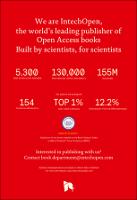Chapter Microemulsions as Nanoreactors to Obtain Bimetallic Nanoparticles
Author(s)
Tojo, C.
Buceta, David
Arturo López-Quintela, M.
Language
EnglishAbstract
Microemulsions are frequently used as nanoreactors for the synthesis of bimetallic nanoparticles. The ability to manipulate the metal distribution in bimetallic nanoparticles is essential for optimizing applications, and it requires a deeper understanding of how compartmentalization of reaction medium affects nanoparticle synthesis. A simulation model was developed to predict the atomic structure of bimetallic nanoparticles prepared via microemulsion in terms of metals employed and microemulsion composition. The model was successfully proved by comparing theoretical and experimental Au/Pt STEM profiles. On this basis, the model becomes a strong tool to further enhance our knowledge of the complex mechanisms governing reactions in microemulsions and its impact on final nanostructures. The purpose of this study is to perform a comprehensive kinetic analysis of coreduction of different couple of metals in the light of the interplay between three kinetic parameters: intermicellar exchange rate, chemical reduction rates of the two metals, and reactants concentration. The particular combination of these factors determines the reaction rate of each metal, which in turn determines the final metal arrangement.
Keywords
bimetallic nanoparticles, microemulsions, reduction rate, intermicellar exchange rate, nanocatalystsDOI
10.5772/intechopen.80549Publisher
InTechOpenPublisher website
https://www.intechopen.com/Publication date and place
2019Classification
Chemistry


 Download
Download